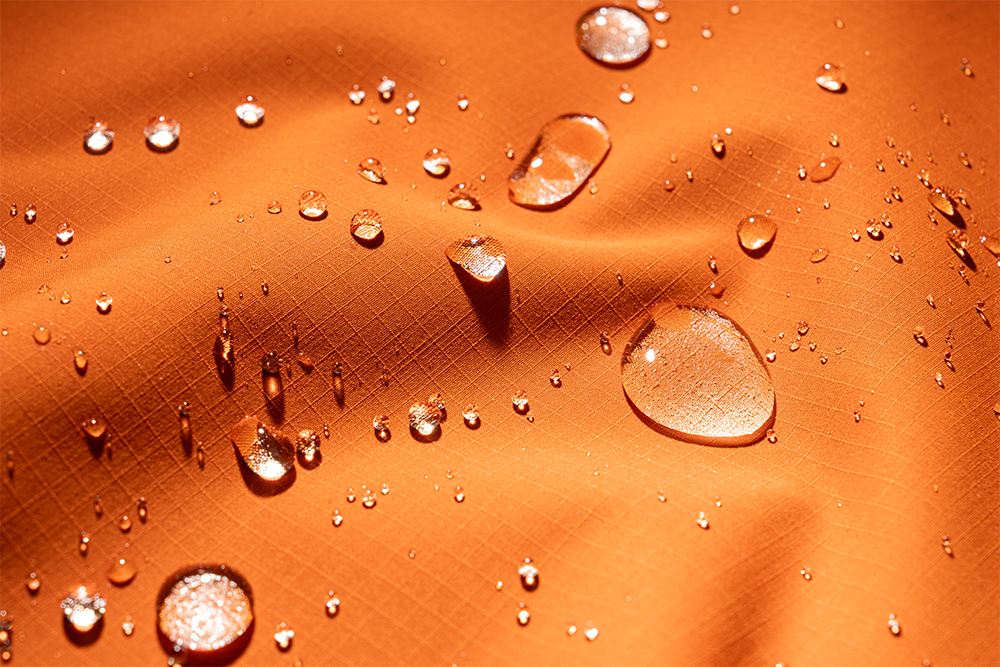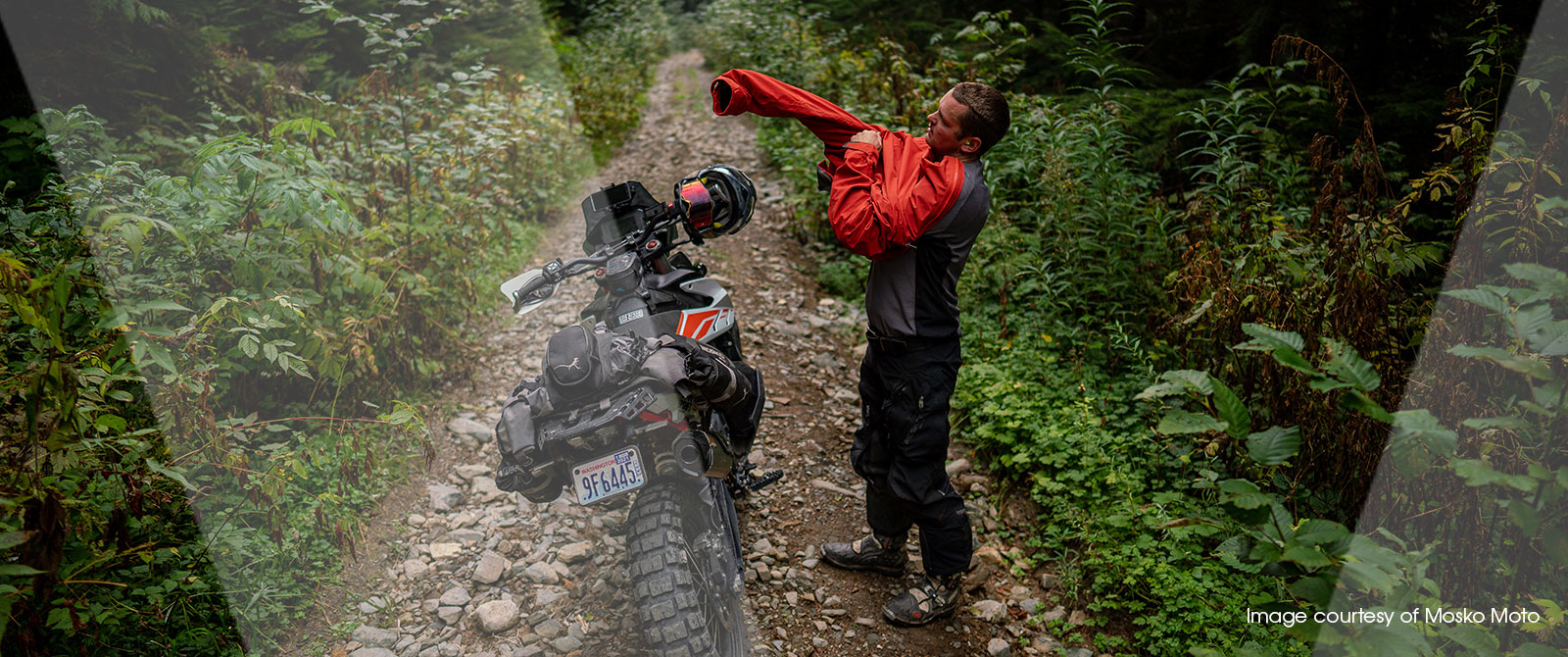Whether you are hiking through a torrential downpour, skiing in the mountains, or navigating a rainy urban commute, having the right outerwear can make all the difference. Waterproof breathable fabric is the unsung hero in outerwear, offering protection from the elements while keeping you comfortable. In this comprehensive guide, we will delve into everything you need to know about waterproof breathable fabric, from its construction to care.
What is waterproof breathable fabric?
Waterproof breathable fabric is a specially engineerted textile designed to repel water while allowign moisture vapor (like sweat) to escape from inside, keeping you dry and comfortable in various weather conditions. This type of fabric is commonly used in outdoor clothing, including rain jackets, ski pants, hiking gear, and in various industrial and military applications.

What makes fabric waterproof?
A fabric's waterproof rating is determind by its ability to resist the penetration of water. This resistance is achieved through the combination of the outer shell material, DWR finish, and waterproof membrane. The key factor that make fabric waterproof include:
- DWR Coating: DWR causes water to bead up on the fabric's surface, preventing it from saturating the outer shell. Regular reapplication of DWR is essential to maintain this property.
- Waterproof Membrane: The waterproof membrane forms the primary barrier against water penetration.
- Taped Seams: Properly sealed seams prevent water from seeping through the stitched areas of the fabric. Untaped seams are a common point in waterproofing.
- Fabric Quality: The quality of the outer shell material can affect waterproofness. High-quality fabrics are often more durable and better at repelling water.
What is DWR (Durable Water Repellent)?
A durable water repellent (DWR) coating is a treatment applied to the outer shell of waterproof fabric. It works by reducing the surface tension of water droplets, causing them to bead up and roll off the fabric rather than being absorbed like when raindrops hit the finish on a car or a plant leaf. Over time, DWR treatments can wear off dur to regular wear, exposure to dirt and oils, and repeated washing. To maintain optimal performance, it is essential to regularly wash your outerwear and periodically reapply DWR using products specfically designed for this purpose.

How do waterproof membranes work?
Hydrophobic membranes
Hydrophobic membranes play a crucial role in the functionality of outerwear by providing waterproof and breathable properties. These membranes are typically made of polymers or synthetic materials with hydrophobic characteristics, meaning they repel water. When integrated into outerwear, these membranes function as a barrier that prevents external moisture, like rain or snow, from penetrating while allowing internal moisture, such as sweat vapor, to escape. The hydrophobic nature of these membranes ensures that water droplets bead up on the fabric's surface and slide off, rather than being absorbed. This dual-action mechanism maintains the wearer's comfort by keeping them dry from external elements and allowing their body heat and moisture to dissipate, resulting in a more breathable and comfortable outdoor experience. Additionally, advanced hydrophobic membranes often include microscopic pores that facilitate water vapor molecules' movement while blocking larger liquid water molecules, further enhancing the breathability and waterproofing of the outerwear.
Hydrophilic membranes
Hydrophilic membranes in outerwear function by utilizing a specialized material that exhibits inherently affinity for water. These membranes are typically integrated into the fabric layers of outdoor garments to provide waterproof and breathable properties. The hydrophilic membrane is engineered to have microscopic pores that are smaller than a water droplet but larger than water vapor molecules. When snow, rain, water, or any liquid contacts the outer surface of the garment, the hydrophilic membrane actively attracts and absorbs the water, preventing it from penetrating the inner layers.
Simultaneously, the moisture vapor produced by the body's perspiration is allowed to escape through these pores due to the difference in pressure and the membrane's hydrophilic nature, ensuring breathability. This combination of repelling external moisture while permitting internal moisture transfer helps keep the wearer dry and comfortable, making hydrophilic membranes a fundamental technology in waterproof and breathable outdoor apparel.
Waterproof breathable fabric construction
Waterproof breathable fabrics are produced with the construction of layers of fabric and membrane, fused together with heat and glue, creating a fabric laminate. The most common fabric laminates consist of the top fabric (the outer shell fabric), or face fabric, a membrane layer, and a backer (or liner) fabric. The number of layers in a fabric laminate creates the expectation for durability, breathability, and overall function of the laminate. The most common laminate types are:
- 2-layer laminates are the most basic construction, combining a face fabric with a membrane. These laminates are either paired with insulation and/or drop liner to protect the membrane layer from damage.
- 2.5-layer laminates are constructed the same as a 2-layer laminate, but the membrane is printed on to protect it from damage.
- 3-layer laminates are the most common construction found in high-performance waterproof apparel. In this construction, the membrane is sandwiched between a face fabric and a backer fabric, protecting it on both sides.
- 4-layer laminates are most used in footwear. This construction method is the same as a 3-layer laminate but between the membrane and backer, a layer of foam or felt is inserted to provide added protection.
Waterproof garment components
When waterproof fabric laminates are constructed into garments, footwear, and accessories, different components are used to lock out moisture and help increase breathability. These components help reinforce any potential weak points, while still maintaining the intended structure and design:
- Seam sealing or seam taping is used to reseal the holes that were created when seams were sewn together and ensure there are no pinholes in the garment where water can enter.
- Zippers and fasteners have dual purposes in waterproof garments. In addition to being used to construct outerwear that is easy to put on and take off, zippers and fasteners can also provide added waterproof protection. Of note, in heavier jackets or garments that have membranes with limited breathability, it is common to find zippers in the armpit area (aka "pit zips") that allow the user to quickly shed body heat.
Waterproofness and Breathability
Even if a garment is constructed using a waterproof membrane with a DWR-treated face fabric, the waterproof and breathability ratings can vary depending on the materials used and how the garment is constructed. By reviewing the waterproof and breathability ratings in waterproof outerwear and footwear, you can find the right piece for your favority activity, lifestyle, or region.
Waterproof Ratings
Waterproofness (or in industry terms water column) measures the level of water pressure that a fabric can withstand before water penetrates it. Waterproofness is measured in millimeters and is tested by putting a 1”x1” cylinder over a piece of fabric and filling it with water until the water leaks through. As the material withstands a greater amount of water presure, illustrating a greater water pressure, the measured water column increases.
Water column ratings give you a roadmap as to what garment works best in the conditions you face. If you need a waterproof jacket for protection as you go for a run outdoors, you don’t need as high of a waterproof rating as someone in more rainy conditions carrying a heavy backpack. The below chart can help you determine what level of waterproofness is the best match for your activities:
|
Water Column Rating (mm) |
Waterproofness |
Usable Conditions |
|
5,000 |
Some resistance to moisture |
Light rain, dry snow, no pressure |
|
10,000 |
Withstand most downpours and heavy snowfall |
Heavy rain and snowfall, light to no pressure |
|
20,000 |
Waterproof in all conditions |
Heavy rain and snowfall, medium to heavy amounts of pressure |
|
30,000 |
Waterproof in all conditions |
Heavy rain and snowfall, heavy amounts of pressure |
Breathability Ratings
Much like how waterproofness keeps you comfortable and dry on the outside, breathability keeps you comfortable and dry on the inside of your garment. By selecting the appropriate level of breathability in your garment, you can help regulate your body’s temperature and help prevent overheating. Breathability is measured by the moisture vapor transfer rate, or MVTR. MVTR measures the rate in which moisture permeates through a fabric in grams/meter2 in a 24-hour period. The higher the MVTR is in a fabric, the more breathable the fabric is, helping you stay dry and comfortable.
|
Breathability Rating (g/m2) |
Usable conditions |
Ideal Activities |
|
10,000 |
Cooler weather conditions, stationary activities |
Snowsports, motorsports, fishing, hunting, lifestyle |
|
20,000 |
Aerobic activities, all weather conditions |
Backpacking, camping, climbing, hunting, snowsports |
|
30,000 |
High-aerobic activities, warmer conditions |
Cycling, trail running, cross country skiing |
Waterproof fabric care
Technical outerwear benefits from regular washing to keep it performing at its best. Before washing, carefully review and follow the manufacturer’s care instructions. Most waterproof garments can be cleaned with the following instructions:
- Secure all zippers and closures on your garment and loosen any elastics
- Always wash technical garments separately
- Do not overload the washing machine. Aim for half a load for proper washing.
- Do not use regular laundry detergent. Use a detergent designed for technical waterproof fabrics. Follow the directions on the label. These can be easily found at outdoor shops or online.
- Tumble dry on low heat to rejuvenate the DWR finish
- Do not use fabric softeners, bleach, or stain removal products and never dry clean your waterproof garments. This will damage the functionality of the fabric.
- Do not use an iron to rejuvenate the DWR finish, an iron that is too hot can irreparably damage the fabric.
Shopping for waterproof gear
When you are looking for waterproof clothing and footwear, keep in mind what activities you plan on using it for, and what the weather conditions are typically like for the area. Pay attention to the item’s water column rating and breathability to ensure you are getting the right garment for your intended use. If you aren’t sure where to start, take a look at our brand partners to find some of the best breathable and waterproof garments, footwear and accessories on the market.

